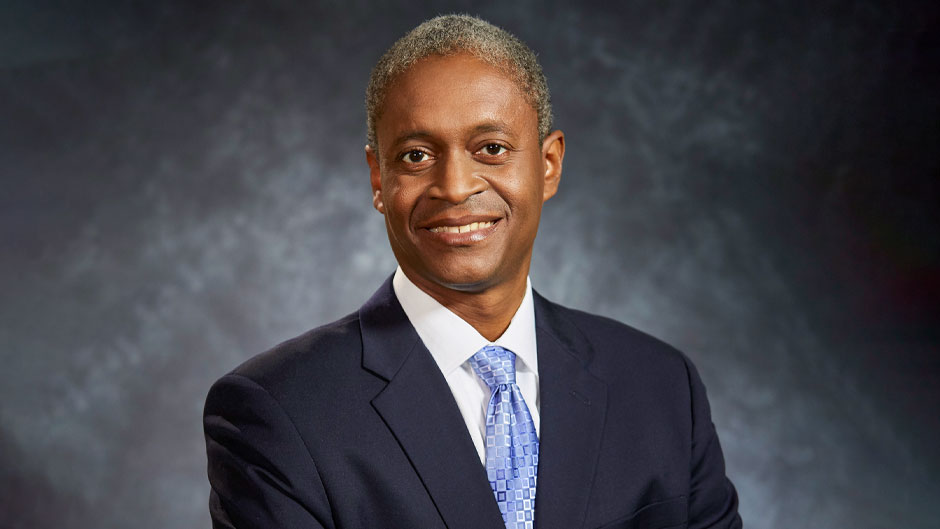Raphael W. Bostic, president and CEO of the Federal Reserve Bank of Atlanta, said the central bank leaned on lessons learned from the 2007-09 recession to put measures in place that have helped to stabilize the U.S. economy from the woes of the pandemic.
“We acted big and went big fast to provide assurances and address some of the uncertainties—and we’ve made tremendous progress,” Bostic said in “Monetary Policy in a Pandemic,” his presentation during a March 31 virtual meeting with the University of Miami Patti and Allan Herbert Business School.
John A. Quelch, dean of the business school, and Rong Hai, an assistant professor of economics, moderated the talk.
Bostic highlighted the central bank’s “bold and decisive” actions and the government’s stimulus relief package, which have reduced unemployment “from the mid-teens to the sixes,” put the GDP on a trajectory to return to pre-pandemic levels, and helped redirect the economy in a positive direction.
“Yet many parts of the economy are still very much in need of recovery and support, and the impact of the crisis has not fallen evenly on the population,” he pointed out.
Bostic oversees the Federal Reserve Bank of Atlanta, one of 12 regional or district banks that comprise the Federal Reserve, the U.S. central banking system. Atlanta services the 6th district, which includes Florida, Georgia, Alabama, and parts of several other southern states.
Despite the progress, Bostic noted that 9 million jobs have been lost nationally since the onset of the pandemic and highlighted the importance of creating jobs that promote equality and reduce disparities.
“The impact of the pandemic is a mixed story,” he said, emphasizing the Fed’s mission to generate “an economy that works for everyone.”
“The only way to narrow the disparities is for those people who have little wealth to get jobs, and jobs that pay well,” he said, recognizing though that “monetary policy is not going to be able to be the difference maker.”
Bostic pointed to two reasons why businesses have been slow or reluctant to bring workers back: uncertainty that demand will be sustained and the psychological pain of having to fire and rehire.
“There have been major shifts in demand, and the question is whether these shifts will be sustained,” he noted.
“Many business leaders remember the recent pain of the Great Recession and having to lay off people—they don’t want to do that again, so the threshold of taking on staff may have changed as well,” Bostic said.
He noted several roles of the Fed: collect and share monetary policy data; convene groups to understand issues that impact those policies (such as hosting “Racism in the Economy” webinars); employ its large network of contacts and connections to share information; and promote innovative measures that work to strengthen the economy.
To a question from Alex Horenstein, an assistant professor of economics, regarding the emergence of Bitcoin and cryptocurrencies, Bostic said that the bank was keenly interested.
“We have at least four work streams that are trying to understand the implications of the rise of these digital currencies and blockchain technology and what the implications of that might be for us in terms of the stability of the banking system,” Bostic responded.
“Yet that market is not at a size or scale that would suggest that it has systemic implications right now, but it’s something that is coming, and we’re thinking hard about the implications,” he added.

